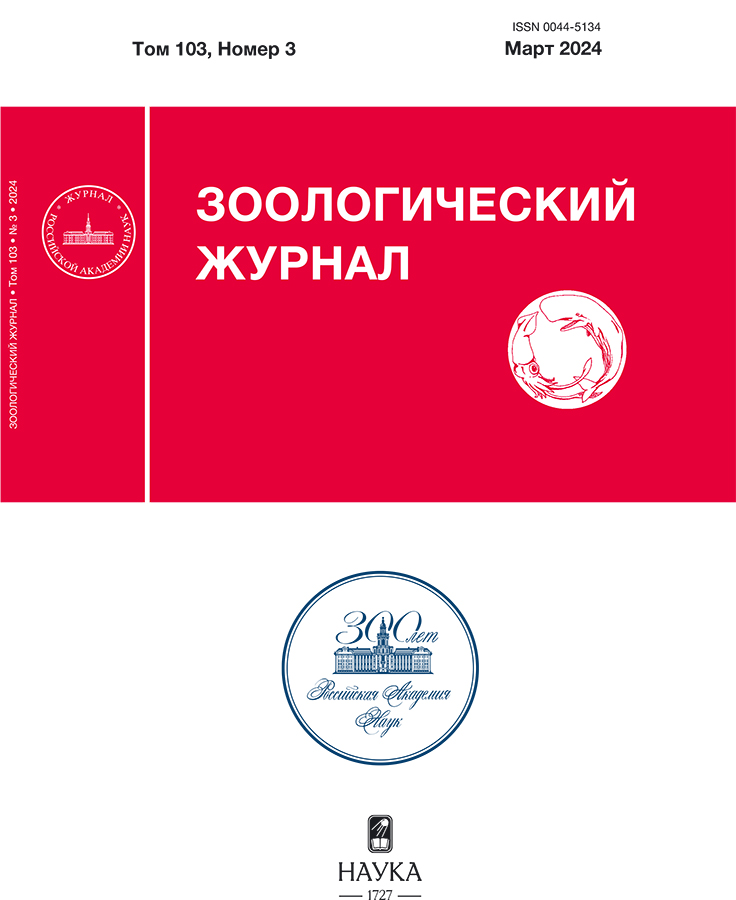Prenatal growth and development of the water vole, Arvicola amphibius (rodentia, arvicolinae)
- 作者: Nazarova G.G.1, Proskurnyak L.P.1
-
隶属关系:
- Institute of Animal Systematics and Ecology, Siberian Branch, Russian Academy of Sciences
- 期: 卷 103, 编号 3 (2024)
- 页面: 116-122
- 栏目: ARTICLES
- URL: https://kazanmedjournal.ru/0044-5134/article/view/654312
- DOI: https://doi.org/10.31857/S0044513424030124
- EDN: https://elibrary.ru/VBSNCG
- ID: 654312
如何引用文章
详细
The morphological and morphometric characteristics of water vole embryos are studied. Embryo implantation occurs on the 5th day of pregnancy. A description of the morphological features of embryonic development at different stages of pregnancy is given, with equations for embryo body weight and length revealed. The results of multiple regression analysis show that embryo weight, when considering the influence of gestational age, is negatively related to the number of live embryos. Our results complement the existing literature on the biology of mammalian development and may be useful for establishing equivalent stages of embryonic development in different species when conducting comparative studies. Morphological features of development and the embryonic growth equations can be used to determine the age of pregnancy and the calendar dates of the beginning and end of the breeding season in natural populations.
全文:
作者简介
G. Nazarova
Institute of Animal Systematics and Ecology, Siberian Branch, Russian Academy of Sciences
编辑信件的主要联系方式.
Email: galinanazarova@mail.ru
俄罗斯联邦, Novosibirsk, 630091
L. Proskurnyak
Institute of Animal Systematics and Ecology, Siberian Branch, Russian Academy of Sciences
Email: galinanazarova@mail.ru
俄罗斯联邦, Novosibirsk, 630091
参考
- Дыбан А.П., Пучков В.Ф., Баранов В.С., Самошкина Н.А., Чеботарь Н.А., 1975. Лабораторные млекопитающие: мышь Mus musculus, крыса Rattus norvegicus, кролик Oryctolagus cuniculus, хомячок Cricetus griseus // Объекты биологии развития. Под ред. Детлаф Т.А. М.: Наука. С. 505–566.
- Тупикова Н.В., Медведева И.М., 1956. Определение возраста эмбрионов как один из методов изучения размножения грызунов // Зоологический журнал. Т. 35. Вып. 10. С. 1574–1582.
- Davis S.W., Keisler J.L., 2016. Embryonic development of the deer mouse, Peromyscus maniculatus // PLoS ONE. V. 11. № 3. e0150598
- Ishikawa H., Seki R., Yokonishi S., Yamauchi T., Yokoyama K., 2006. Relationship between fetal weight, placental growth and litter size in mice from mid- to late-gestation // Reprod. Toxicol. V. 21. № 3. P. 267–270.
- Favaron P.O., Carter A.M., 2023. The trophoblast giant cells of cricetid rodents // Front. in Cell Dev. Biol. V. 10. 1097854.
- Freetly H.C., Leymaster K.A., 2004. Relationship between litter birth weight and litter size in six breeds of sheep // J. Anim. Sci. V. 82. № 2. P. 612–618.
- Fowden A.L., Ward J.W., Wooding F.P., Forhead A.J., Constancia M., 2006. Programming placental nutrient transport capacity // J. Physiol. V. 572. Pt 1. P. 5–15.
- McCoard S.A., McNabb W.C., Peterson S.W., McCutcheon S.N., Harris P.M., 2000. Muscle growth, cell number, type and morphometry in single and twin fetal lambs during mid to late gestation // Reproduction, Fertility and Development. V. 12. P. 319–327.
- Mu J., Slevin J.C., Qu D., McCormick S., Adamson S.L., 2008. In vivo quantification of embryonic and placental growth during gestation in mice using micro-ultrasound // Reprod. Biol. Endocrinol. V. 6. P. 34.
- Ozdzeński W., Mystkowska E.T., 1976. Stages of pregnancy of the bank vole // Acta Theriol (Warsz). V. 21. P. 279–286.
- Ozdzeński W, Mystkowska E.T., 1976а. Implantation and early postimplantation development of the bank vole Clethrionomys glareolus, Schreber // J. Embryol. Exp. Morphol. V. 35. № 3. P. 535–543.
- Ricklefs R.E., 2010. Embryo growth rates in birds and mammals // Functional Ecology. V. 24. № 3. P. 588–596.
- Roberts R.L., Wolf K.N., Sprangel M.E., Rall W.F., Wildt D.E., 1999. Prolonged mating in prairie voles (Microtus ochrogaster) increases likelihood of ovulation and embryo number // Biol. Reprod. V. 60. № 3. P. 756–762.
- Sansom G.S., 1922. Early development and placentation in Arvicola (Microtus) amphibius, with special reference to the origin of placental giant cells // J. Anat. V. 56. Pt 3–4. P. 333–365.
- Udan R.S., Dickinson M.E., 2010. Imaging mouse embryonic development // Methods Enzymol. V. 476. P. 329–349.
补充文件













